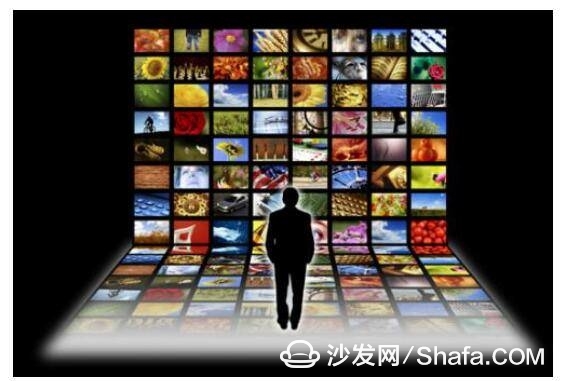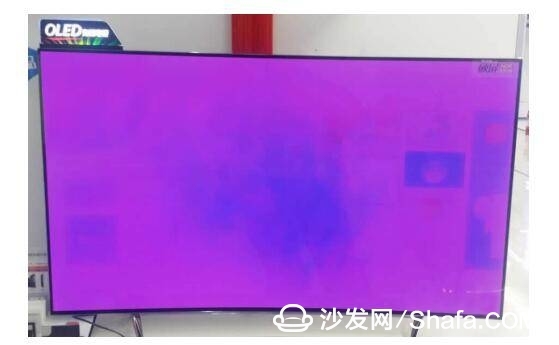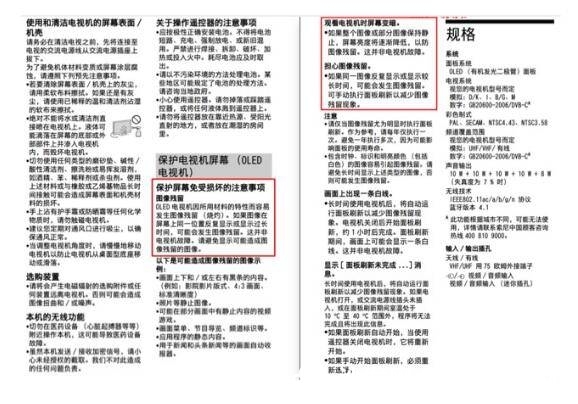With the promotion of consumption upgrade policies such as the replacement of color TV sets, the discussion on the useful life of television sets has once again returned to the consumer's perspective. Although the rise of the middle class in our country has promoted the frequency of replacement of electronic consumer products such as TVs, as one of the traditional “three majorsâ€, TV does not become a “quick consumer product†like consumer electronics products such as mobile phones and still has 6- 7 years of use is expected. However, in addition to the self-renewal of technology promoted by technological change, the “burning†problem is considered to be the biggest impediment to the length of television use.
TV service life has become a major factor affecting consumer purchases
Burning screen has precedent
Burning screen is also called “burningâ€. It does not mean that the TV screen has been burned out, but it refers to the phenomenon of screen sticking caused by long-term operation of the screen under high brightness and long playback of a single screen, which greatly affects the viewing experience. For example, if you watch a channel (such as "CCTV-1") for a long time, then the CCTV-1 logo will stay in the upper left corner of the TV screen, causing a permanent imprint, which will cause some trouble to watch other programs.
"Burn screen" problem back to consumers
In the 10 years ago when the liquid crystal and plasma TV display technology struggled with each other, one of the important reasons for the plasma “hate to leave the field†was to burn screens. From the display principle, the nature of plasma burning is the inconsistency of the light emitting state caused by plasma phosphors irradiated by different amounts of ultraviolet rays for a long time. Plasma TV manufacturers cannot solve this problem in a short time.
With the LCD stick CRT, the burning screen problem is solved at the display source, so the word “burning screen†has gradually faded away in recent years, and it is no longer one of the factors that consumers need to consider when choosing a TV. However, in recent years, the emergence of OLED TVs has pushed the burning problem to the cusp.
Another death
The hottest topic in the color TV industry is the dispute between QLEDs and OLEDs, because they have come to the intersection of display technology. History is always surprisingly similar. In addition to the dispute between the two major TV display technologies, the burning screen issue was once again put forward, becoming another "birth and death" of color TV vendors.
Since OLED TVs are made of mixed organic materials, the degradation of organic materials occurs as the viewing time shifts, and this process is irreversible and becomes what is commonly referred to as "burning." Many OLED TVs directly indicate in the manual that “If the same image is displayed repeatedly or displayed for a long time, image sticking may occur.†“The OLED TV is prone to image sticking (burning) due to the characteristics of the materials used to avoid the related Burning screen warranty issue.
Some OLED TV specifications directly point out the problem of OLED TV burning
As the mobile phone market continues to prosper and the speed of update continues to accelerate, OLED has already shined in the application of mobile phones, but the use of TV screens has not yet seen signs of explosion. Ouyang Zhongcan, an academician of the Chinese Academy of Sciences, believes that OLED technology is more suitable for use on small screens with a short period of time, but it does not work on large-screen TVs and affects the service life.
QLED breaks the lead
Most OLED TVs are evasive to the problem of OLED "burning", but this approach may bring about no small potential risks. Once the problem has broken out on a large scale, the progress of display technology will be overturned overnight, even as plasma threatened the survival of manufacturers as many years ago.
In recent years, Samsung TV has taken the lead in reforming and spending heavily on research and development of new QLED quantum dot display technology, breaking the "burning screen" dilemma. This technology uses inorganic material quantum dot material, which avoids the problem of degradation of the image quality from the material, and the screen display is more stable and can be used for a long time. More importantly, Samsung TV QLED technology can restore 100% color rendering volume, and the screen rendering effect is better than OLED.
RTINGS, a well-known TV evaluation website in the United States, has performed afterimage experiments on QLEDs and OLEDs. According to test results, OLED TVs have more serious residual shadows. In the case of perfect scores, OLED scored only 5.4 points, while QLED TV scored 10 points because there was no image sticking problem.
Samsung QLED TV Launches "10 Years of Burning Screen Warranty Service"
In order to completely eliminate consumer concerns when purchasing, Samsung recently launched a "10 year burn screen warranty service": Where in July 1, 2017 to August 31, to buy Samsung QLED light quality sub-point TV can be free Enjoy 10 years of burn screen warranty, more secure and more secure.
From the results of the dispute between plasma and liquid crystal many years ago, it can be seen that color TV industry has become an inevitable choice to abandon the display technology with burning screen risk. Those who seek change, stick to death, and burn screen problems may again become a "life and death robbery" that test TV manufacturers' technology accumulation, service concepts, and future choices.
Smart TV/box information can focus on smart TV information network sofa butler (http://), China's influential TV box and smart TV website, providing information, communication, TV boxes, smart TVs, smart TV software, etc. Answering questions.
UHD Indoor Led Screen
Front Serviceable Cabinets UHD led screen video wall P1.25, P1.56 P1.875, P1.923 and P2.5
Small pixel pitchled screen cabinet design that will forever change the way LED video displays are specified. Feature for feature, HD, 4K, or 8K. This series of LED diplays screens are
designed for Broadcasting, Control Room and 24/7 Emergency Operation
Center applications, featuring redundant power supply and receiving
card. These features will provide a worry free video display for mission
critical applications.
Compare with LCD sets, indoor led video wall has many advantages.That's why the UHD led display are getting more and more popular and acceptable
Small Pixel Pitch Led Display, Small Pixel Pitch Led screen ,UHD Led Screen UHD led display ,Small Pixel Pitch Led Video Wall
Shenzhen Priva Tech Co., Ltd. , https://www.privaled.com



